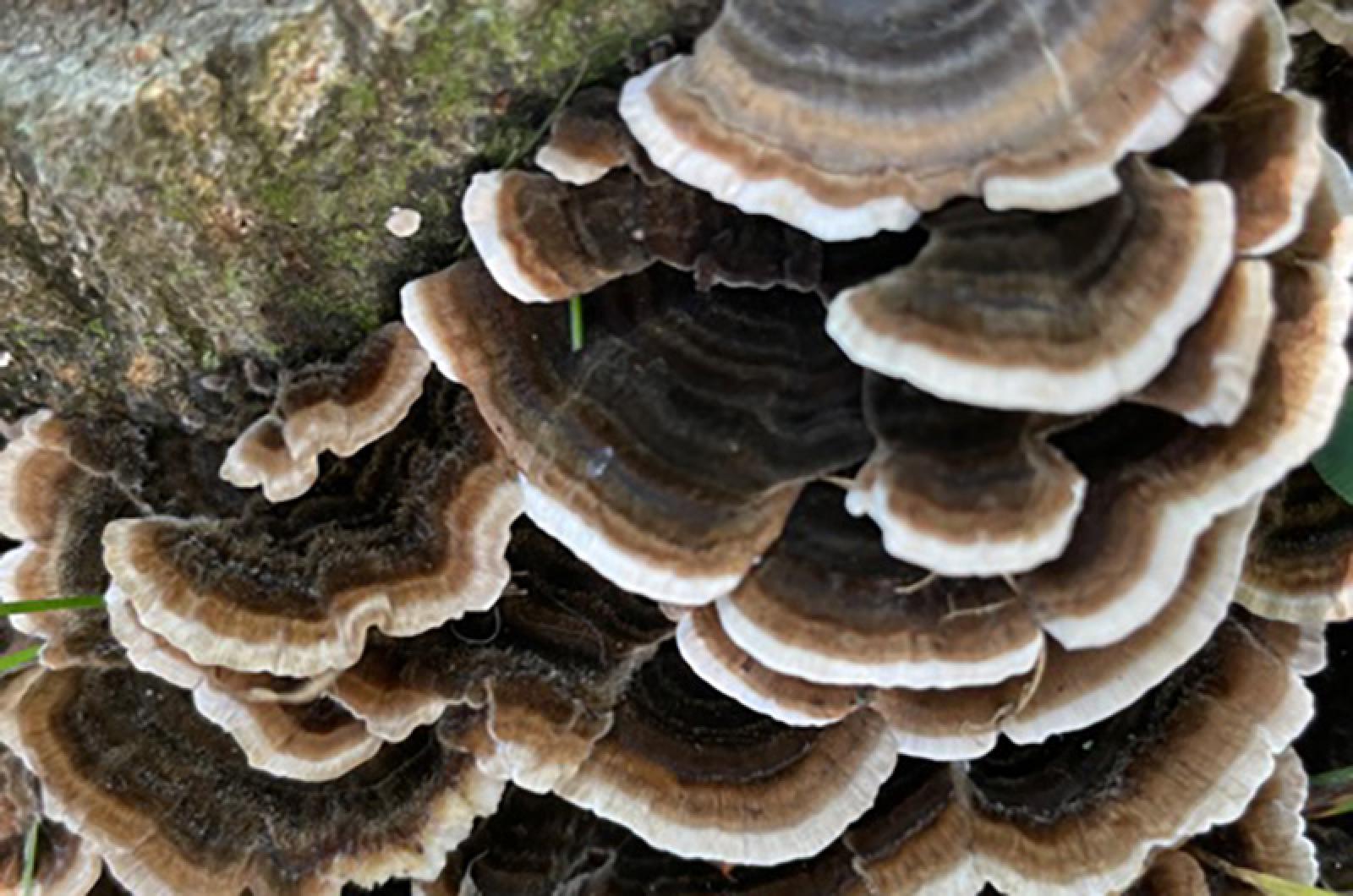I’m in a fowl mood.
This season, the fungus has been very much among us. And though there has been a mess of mushrooms, I’ve had little luck so far with finding the favorite fungal fowls: chicken and hen of the woods.
Those edible mushrooms are well loved and are currently being harvested. Thankfully, I have friends who find and share their catch. But I have been stumped in my search for these stump-loving species.
Not all of the fowl fungus has been out of my reach. Though not the angel of my eye or poultry of my dreams, turkey tails are in my sight.
This is not usual since, as one mycologist explained, turkey tails “are everywhere on dead wood . . . . If you cannot find these you may need to consider visiting an eye doctor or giving up mushroom collecting.”
No need to grab my glasses since I’ve seen turkey tails all over.
Turkey tails are those fan-like shelf mushrooms that grow off of live and dead wood. They have distinctive, layered, often colorful stripes that, to some, resemble turkey tail feathers. Though not edible like the aforementioned species, turkey tails have some reputed medicinal uses.
Found worldwide, turkey tails are known by the Japanese as kawaratake, which translates to mushroom by the riverbank. The Chinese call it Yun zhi or cloud fungus, but many other names cloud its identification.
Turkey tail fungus has numerous scientific names, given by a variety of mushroom mensches. Start with Carl Linneaus, the Swede who gave this species two names — boletus versicolor and agaricus versicolor — in the 18th century. At the same time, Italian Giovanni Antonio Scopoli called it poria versicolor.
Next, another Swede, Elias Magnus Fries, christened it three times as polyporus fuscatus, polyporus versicolor and polystictus azureus. Frenchmen Lucien Quelet baptized this fungus coreolus versicolor, and British naturalist Mordecai Cubitt Cooke favored his own nomenclature, polystictus versicolor.
Finally, in 1939, Czech mycologist Albert Pilat gave it the name that stuck: trametes versicolor. Trametes means “one who is thin,” referring to its slender slices, and the species name means “of many colors.” So, call it any one of these names and you won’t run afoul of being correct.
While not edible in the traditional way, turkey tail is considered by many to be a medicinal mushroom. It has been recommended for immunotherapy, as an anti-cancer agent, and for respiratory and gastrointestinal support.
Teas, tinctures, and extracts can be made and used, but don’t take the word of this columnist as I am neither a doctor or healer.
First, though, is identifying it. Look for it emerging from dead and/or injured trees, both upright and rotting on the ground. Those telltale stripes of color are an excellent indicator that you have indeed found turkey tails.
Also look at the underside of the mushroom: it should be white and have tiny pores, not gills, which is why this species is considered a polypore mushroom. These pores are where the white spores are released. The most common lookalike is the false turkey tail, which has a beige underside.
Turkey tails do provide nourishment to some. A few animals partake in the consumption of this thin-shelf fungus, including certain species of caterpillars, fly maggots and gnats, which is another good reason for you to not eat turkey tail — in case some of those critters are still munching on it.
With such a cornucopia of names, it is easy to talk turkey. And though this species is neither fish nor fowl, it tells tales of the coming seasonal abundance.
Suzan Bellincampi is islands director for Felix Neck Wildlife Sanctuary in Edgartown and the Nantucket Wildlife Sanctuaries. She is also the author of Martha’s Vineyard: A Field Guide to Island Nature and The Nature of Martha’s Vineyard.




Comments
Comment policy »